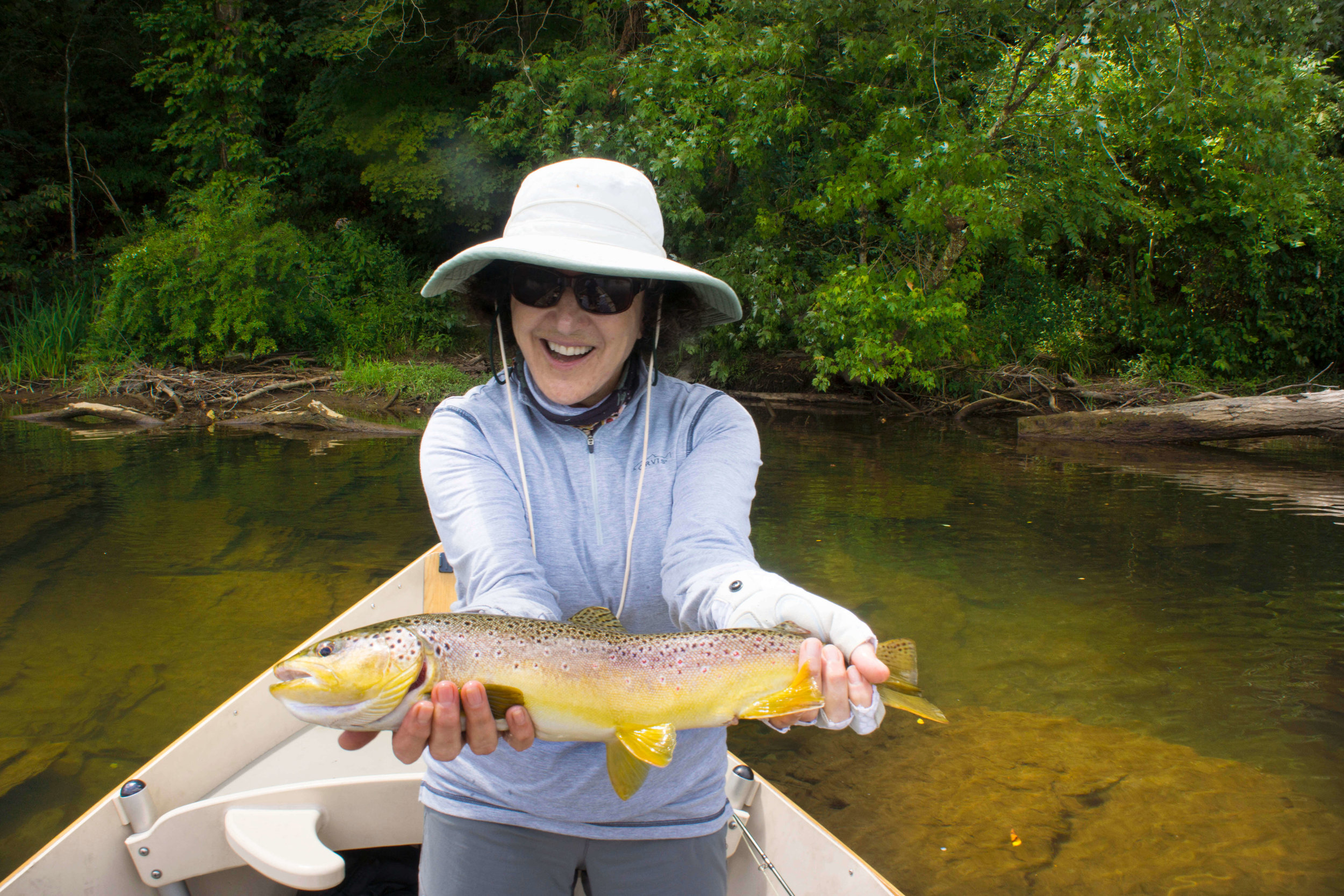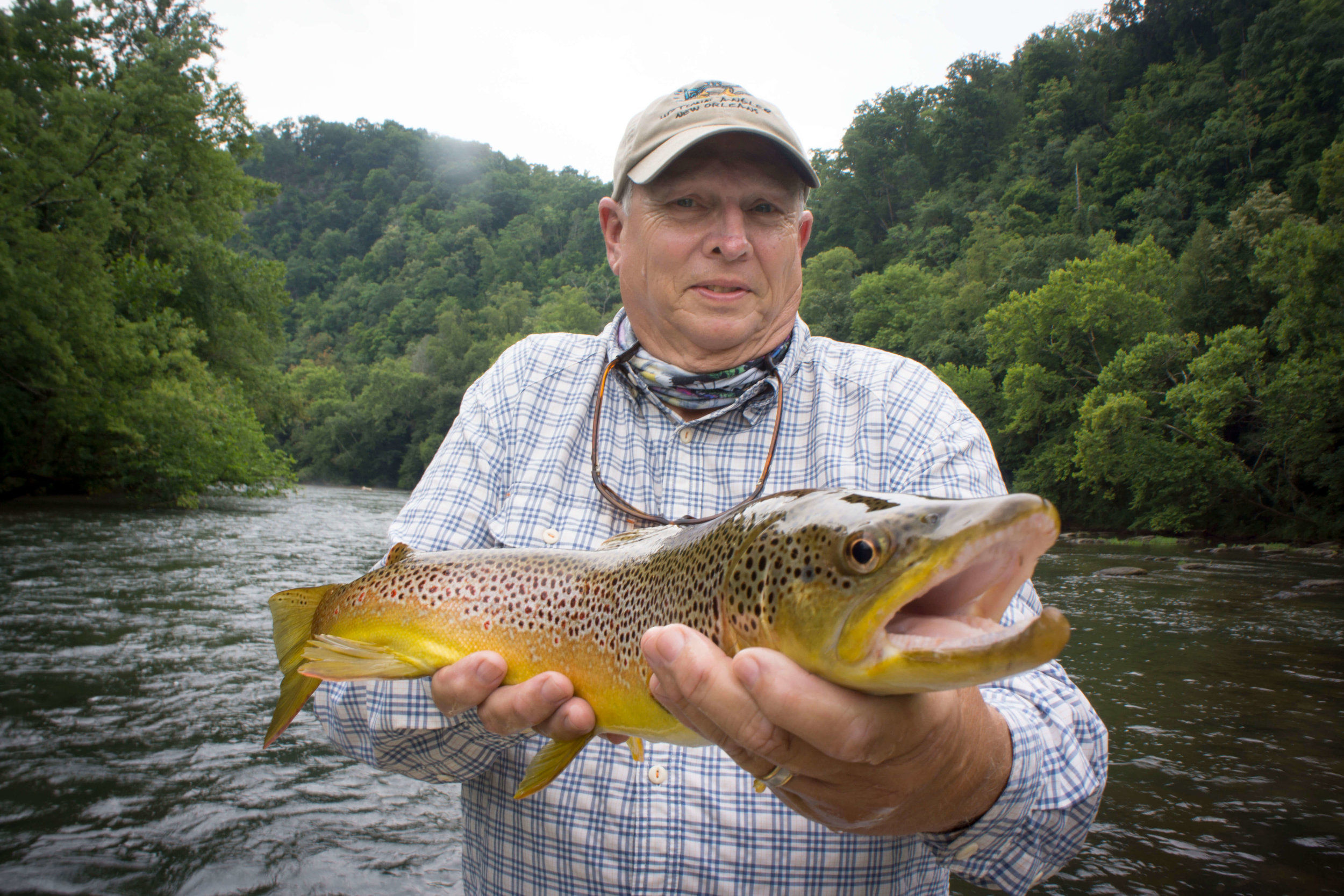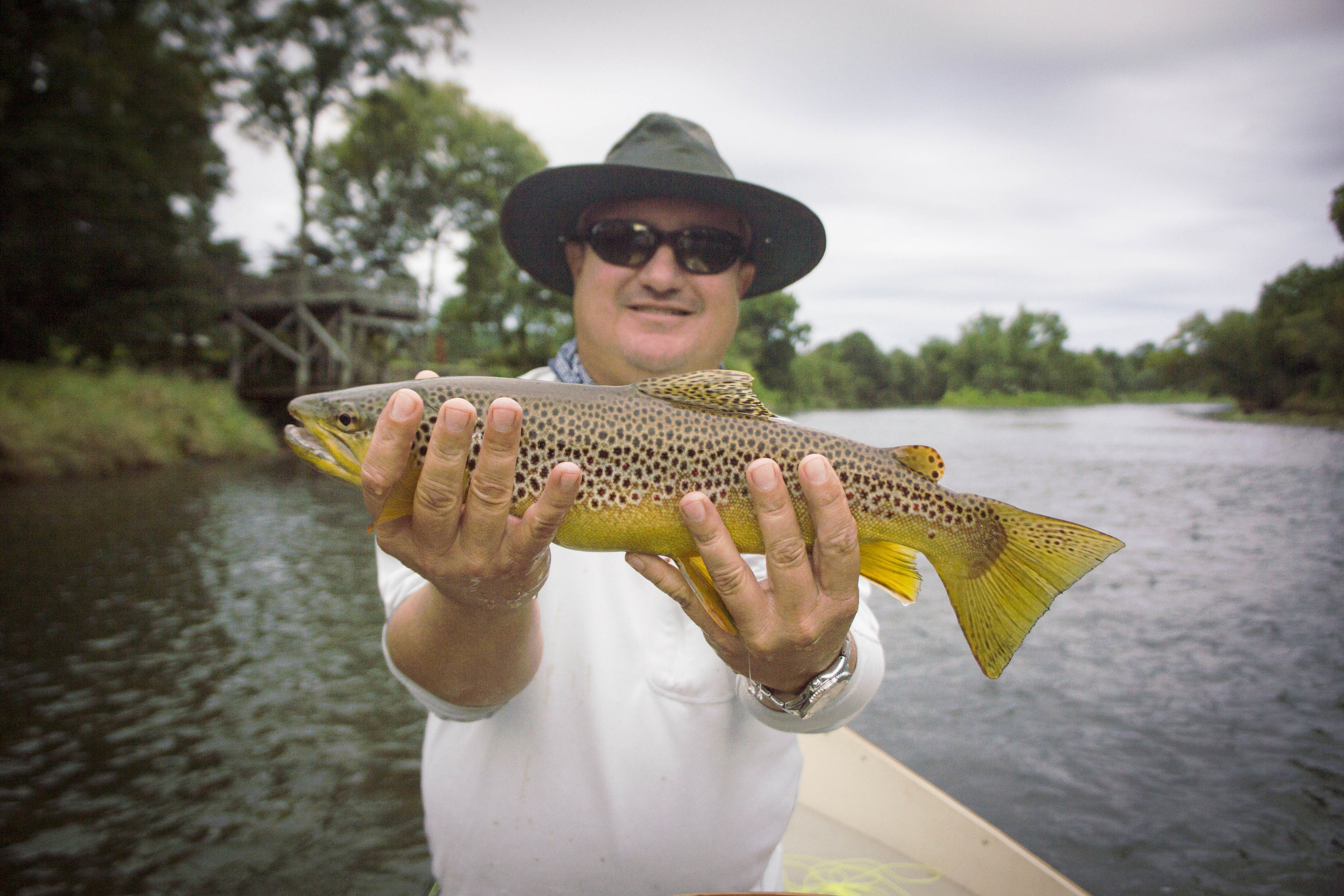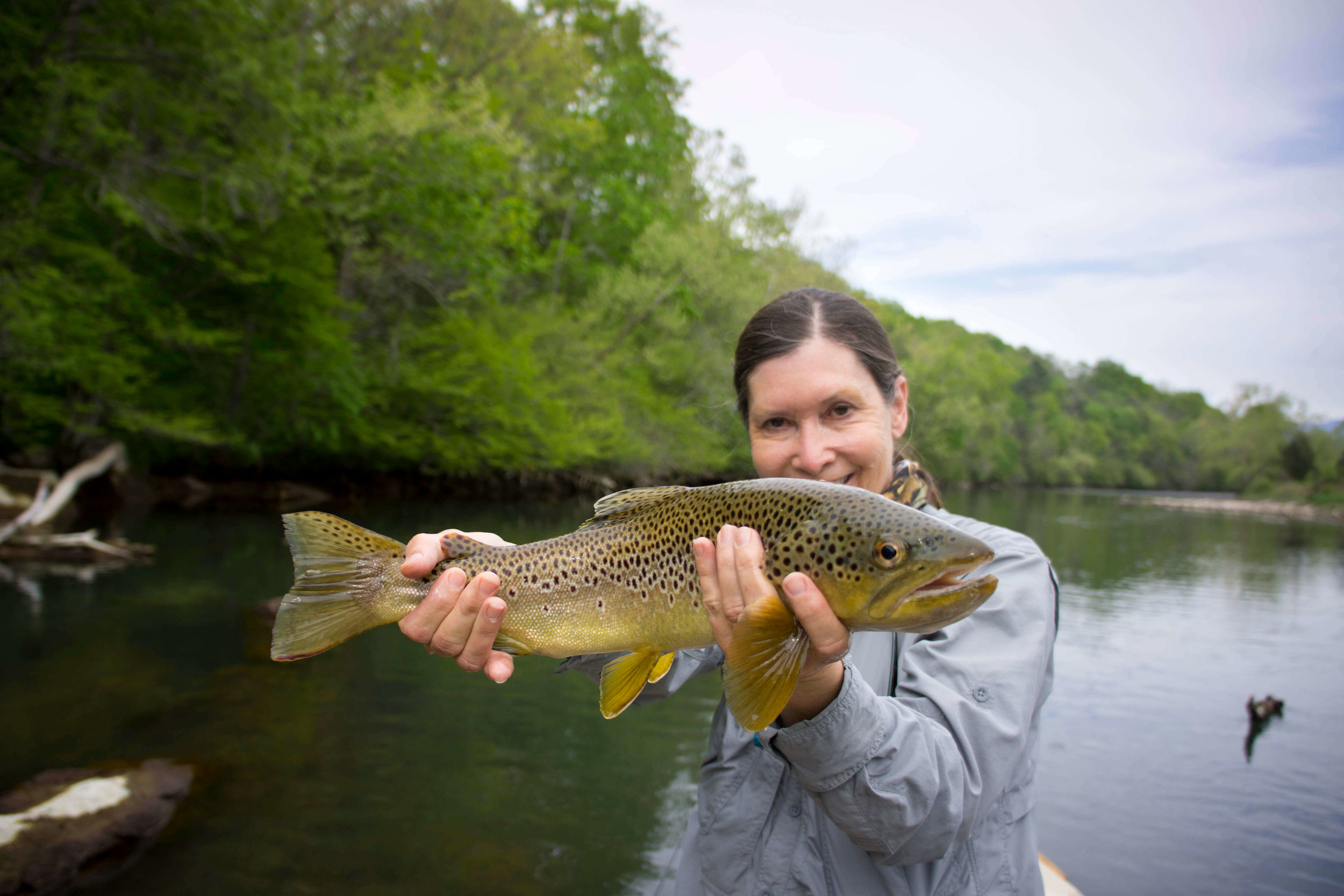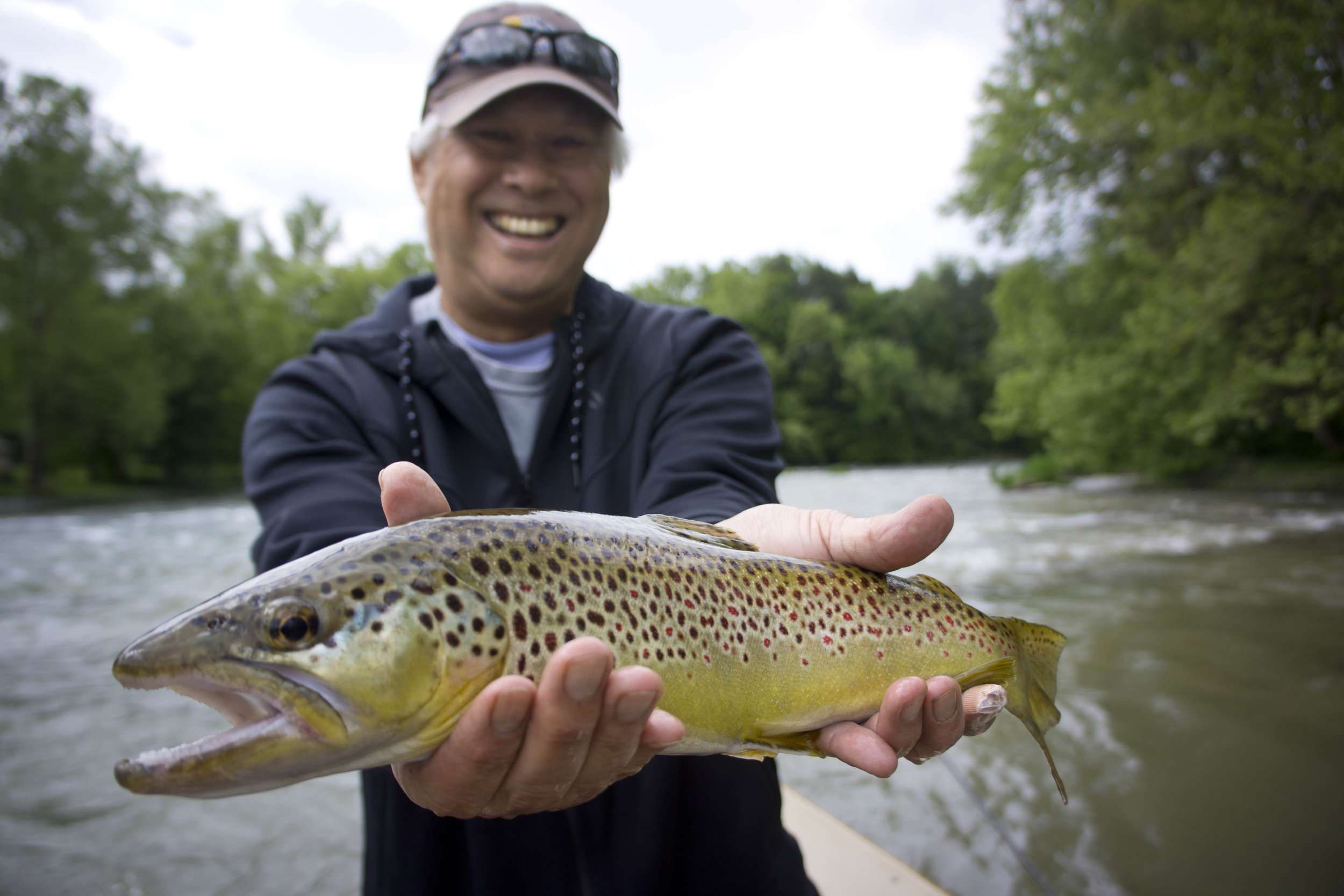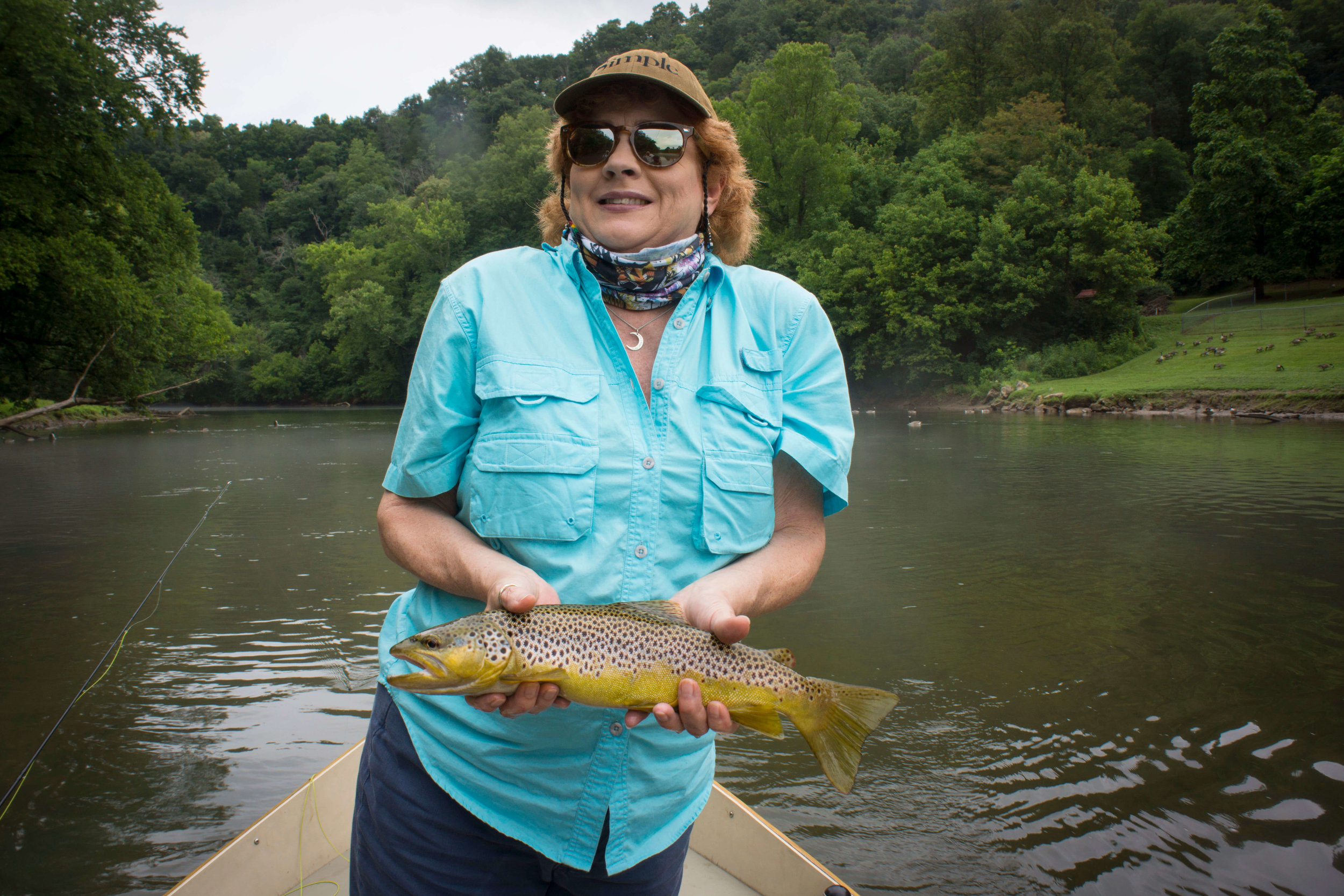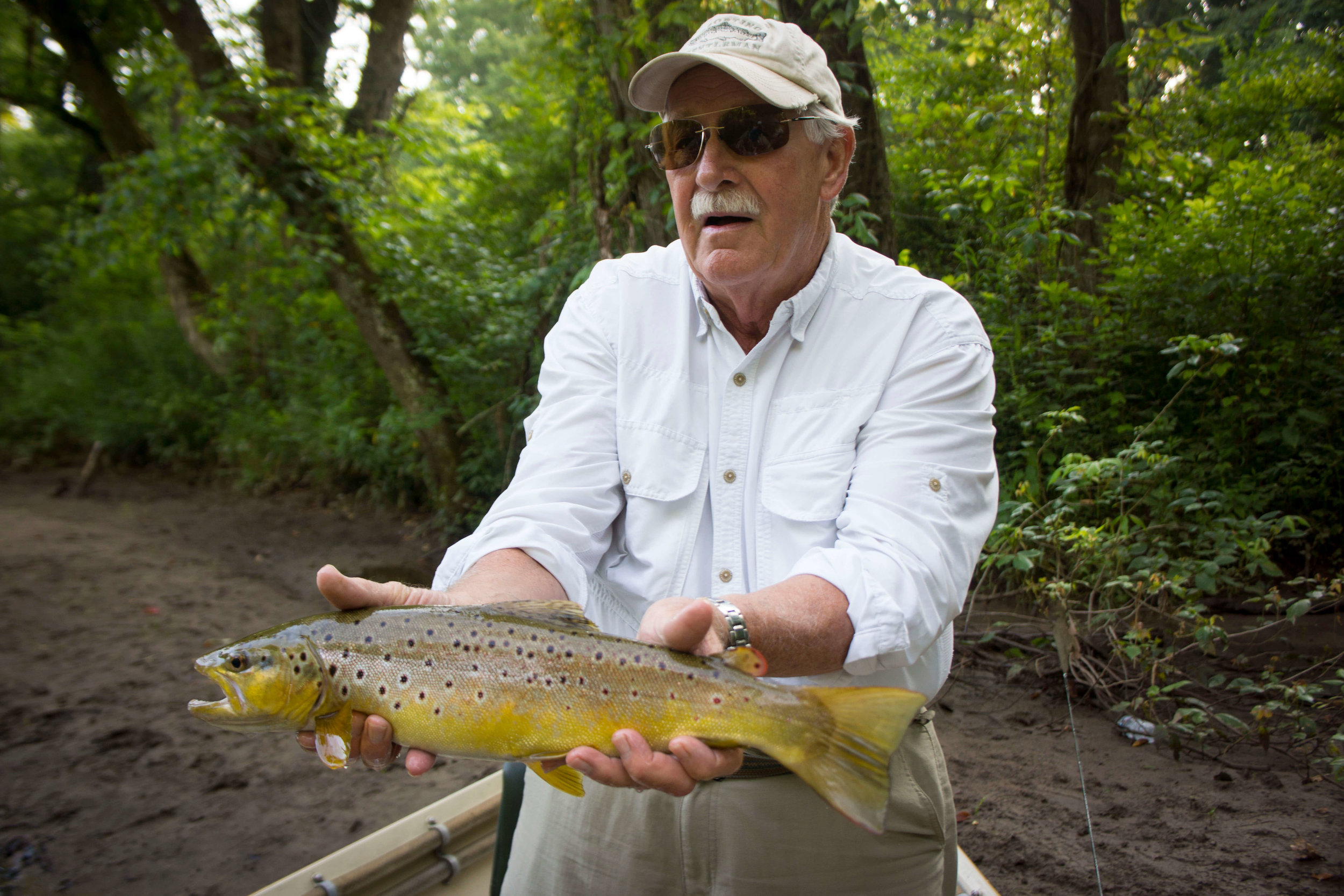Sometimes we get an opportunity to catch “the fish that got away.”

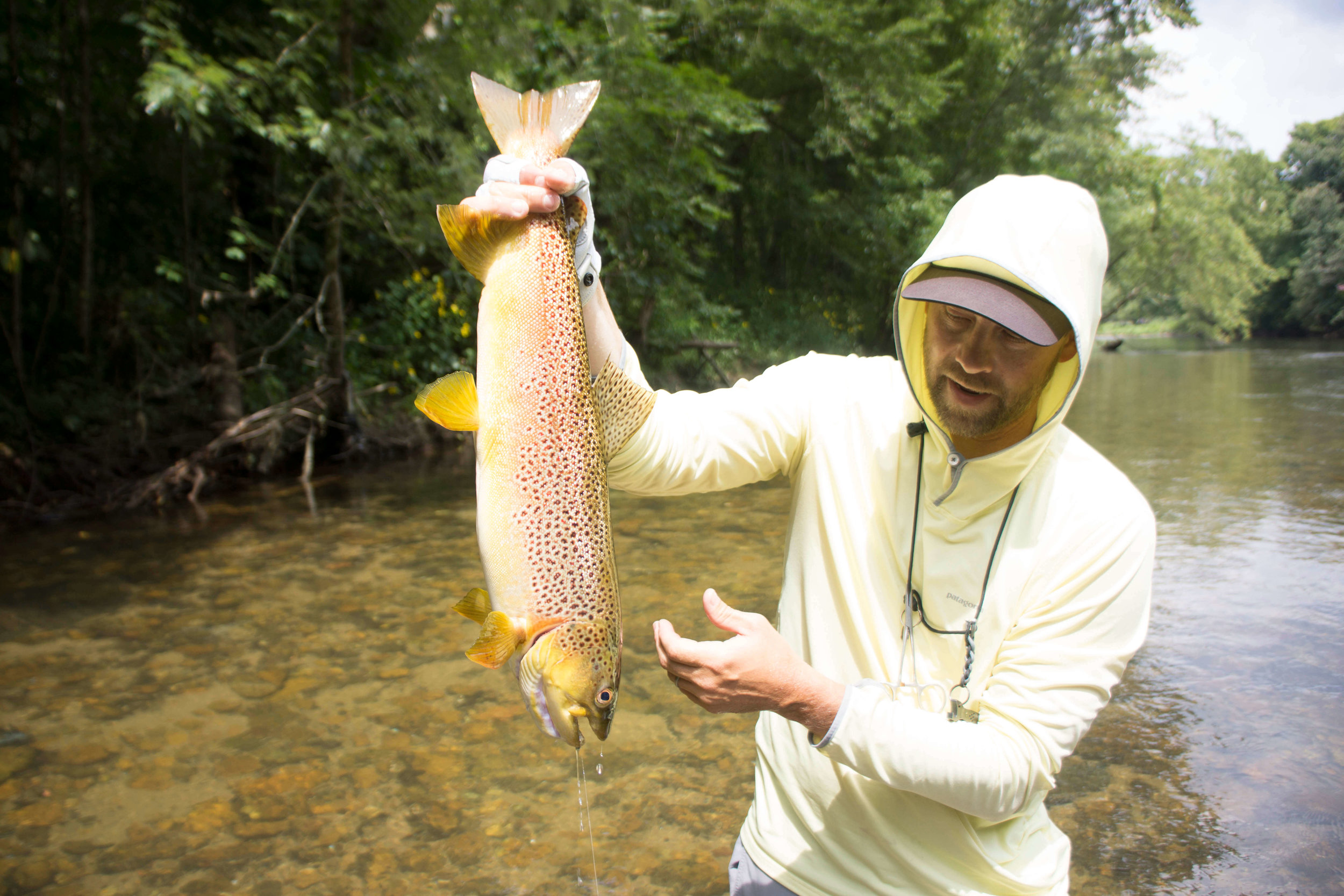
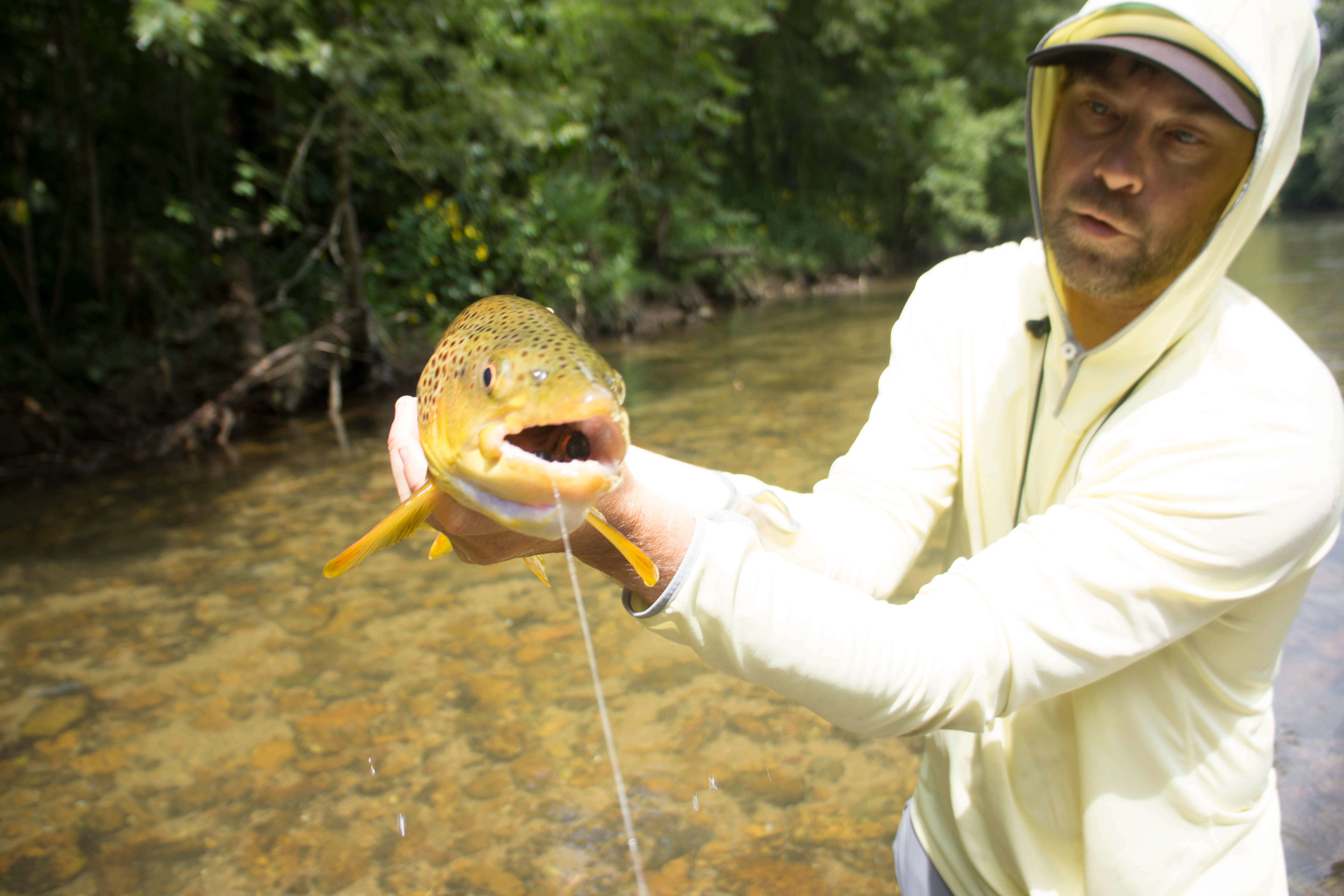
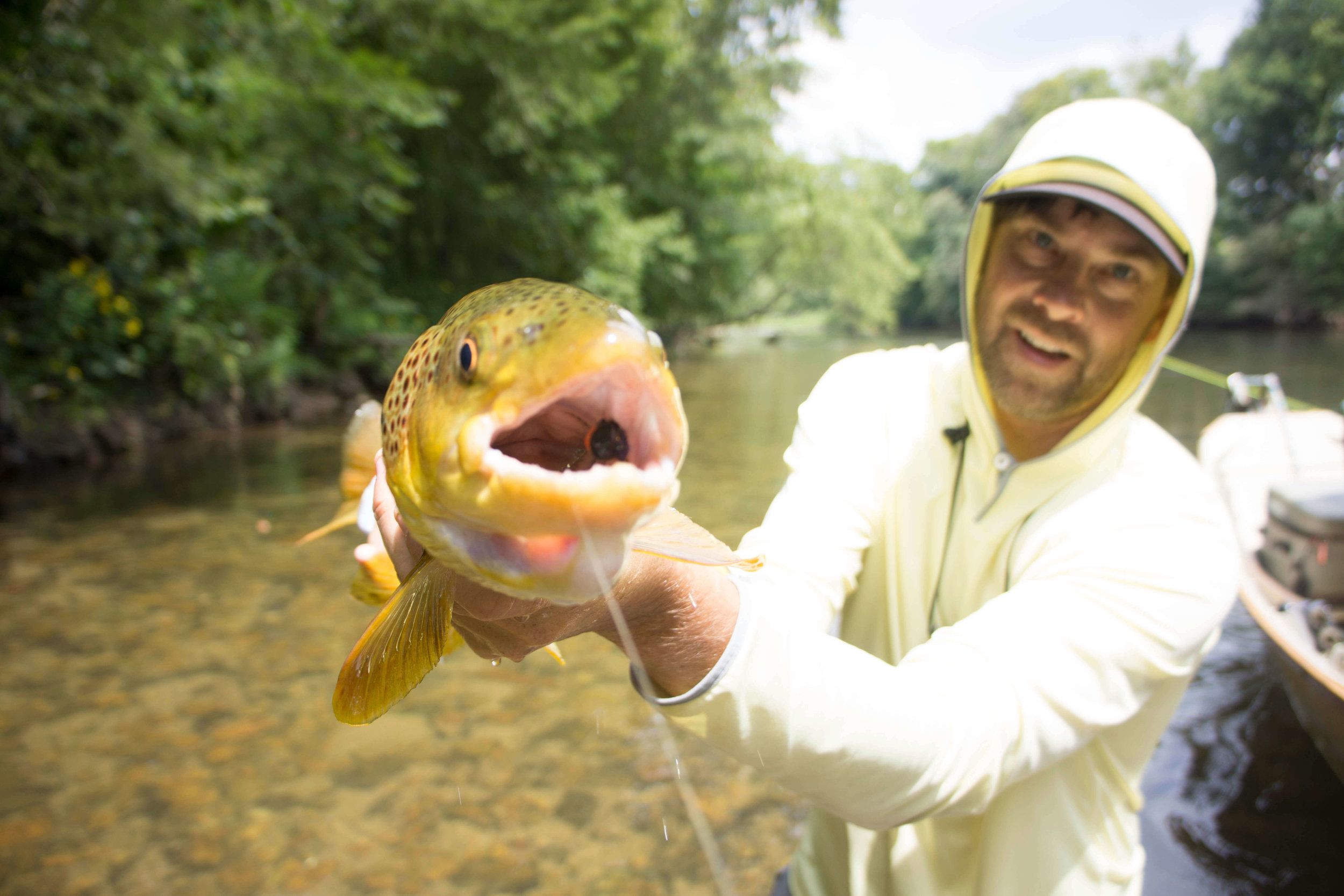
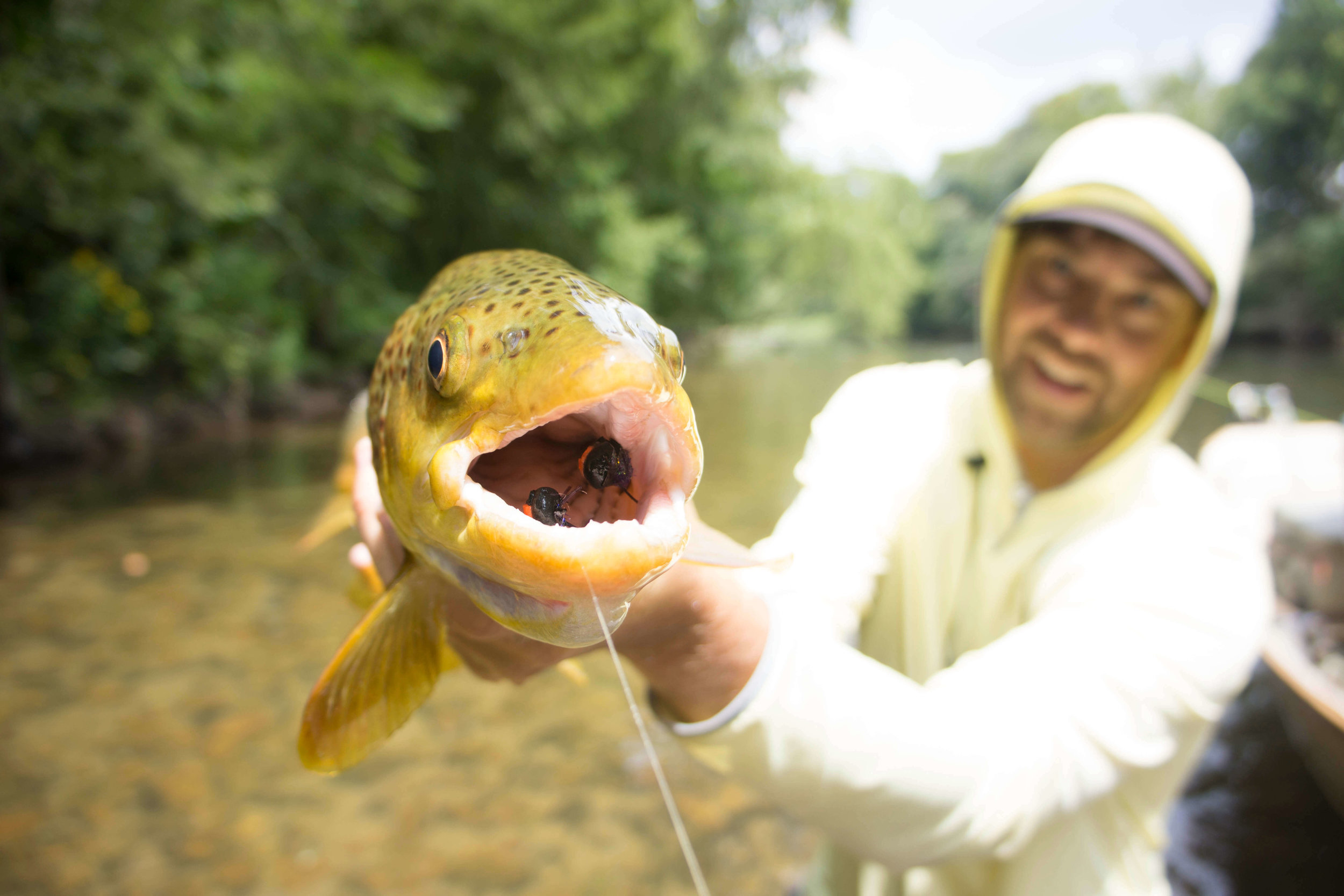
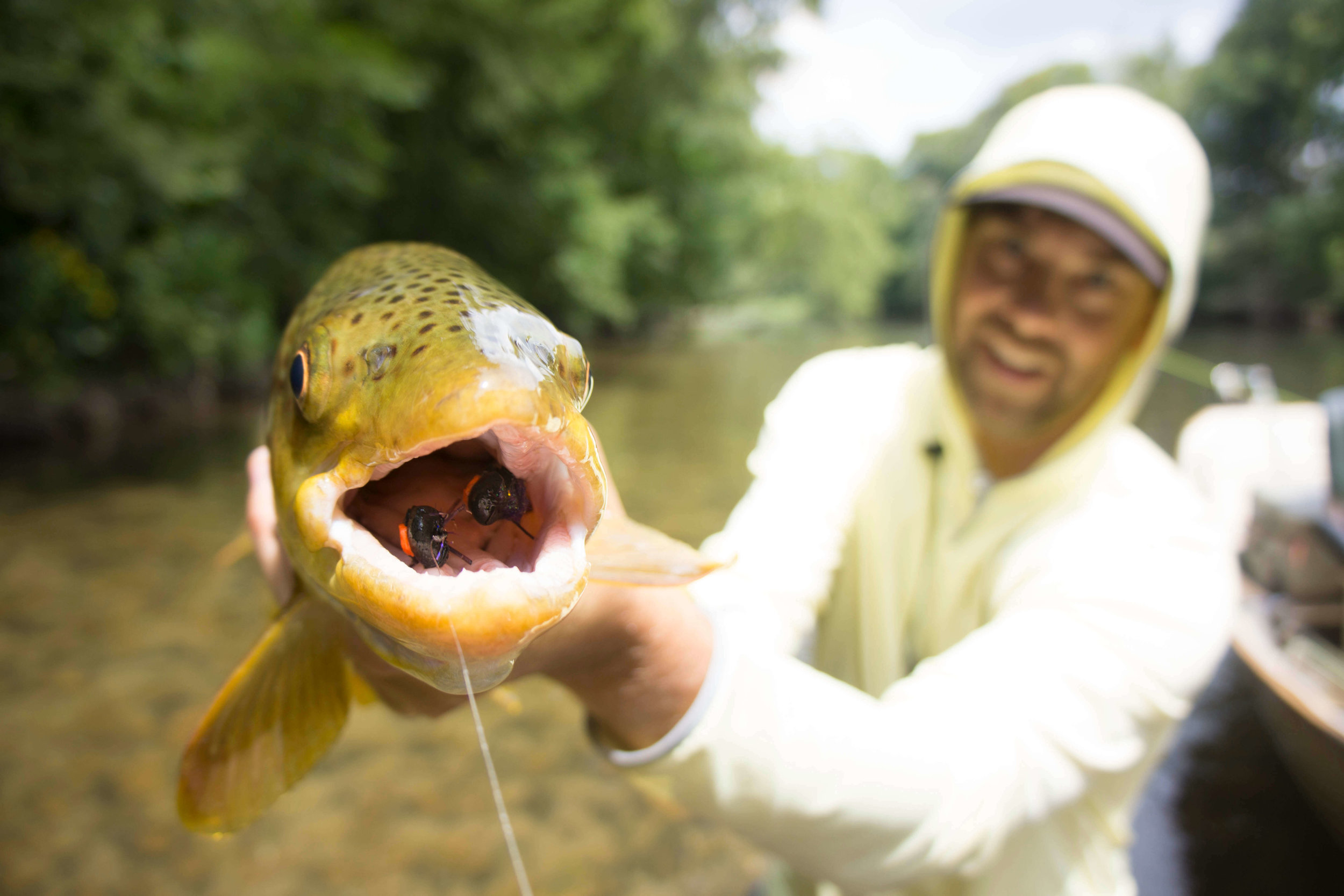
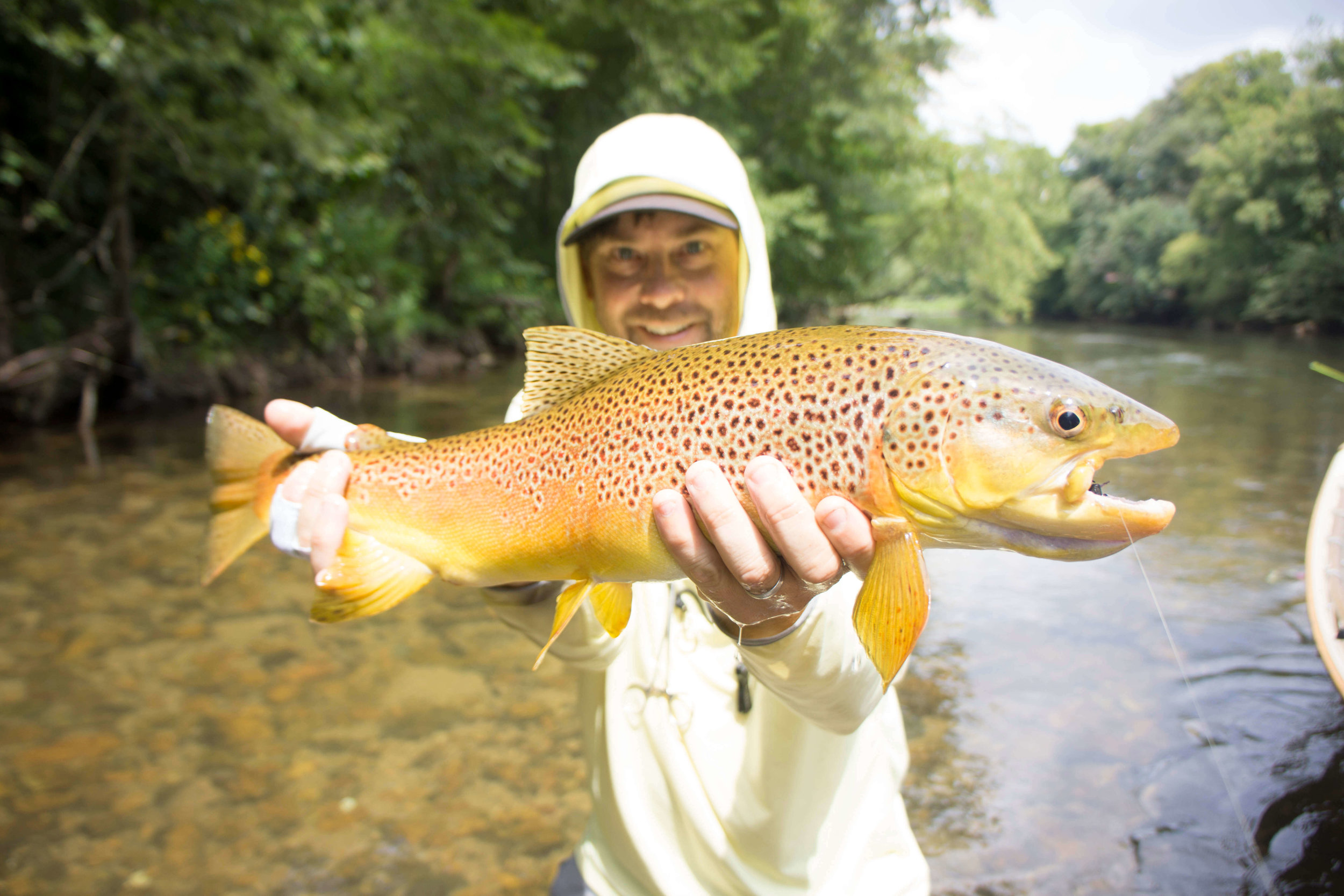
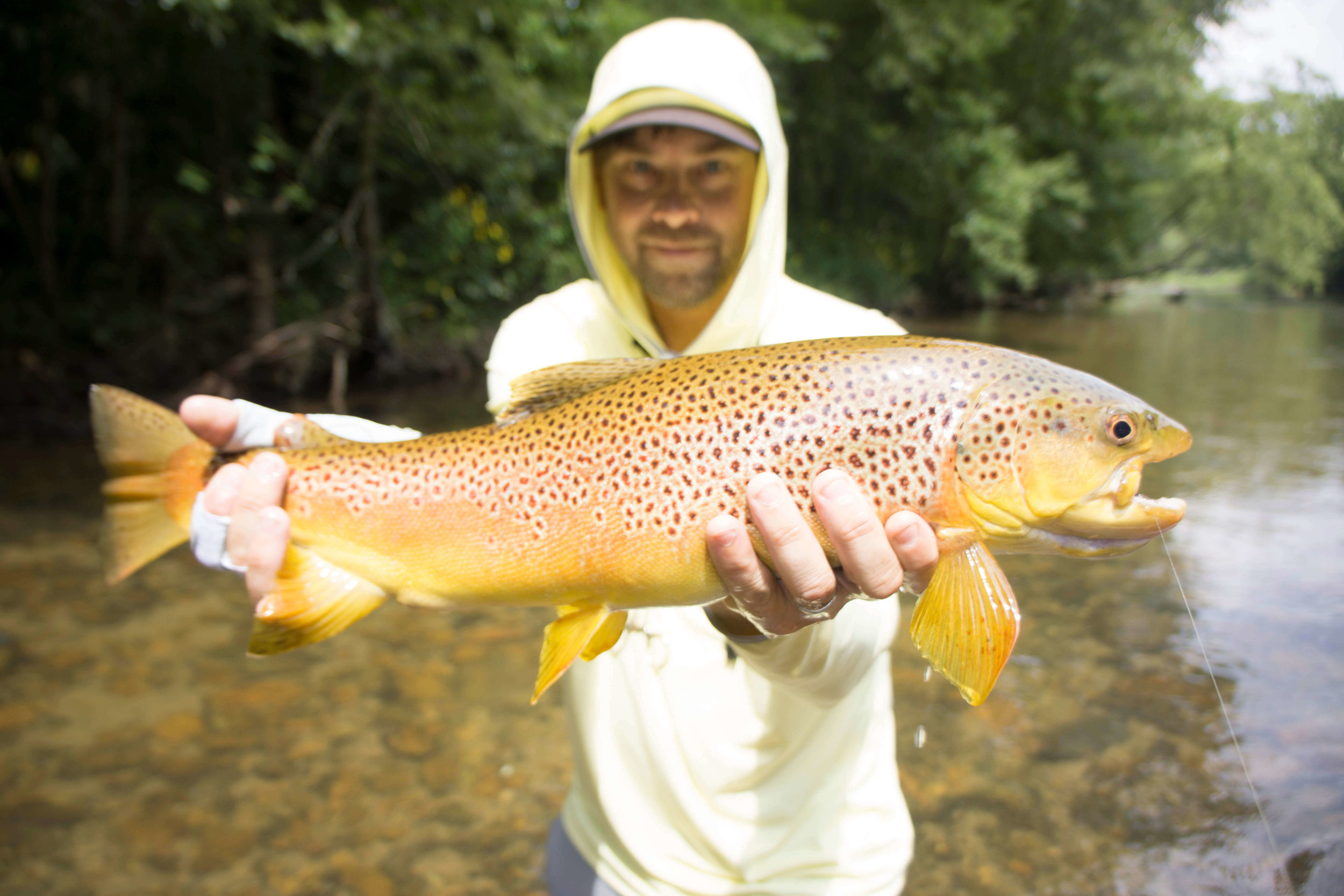
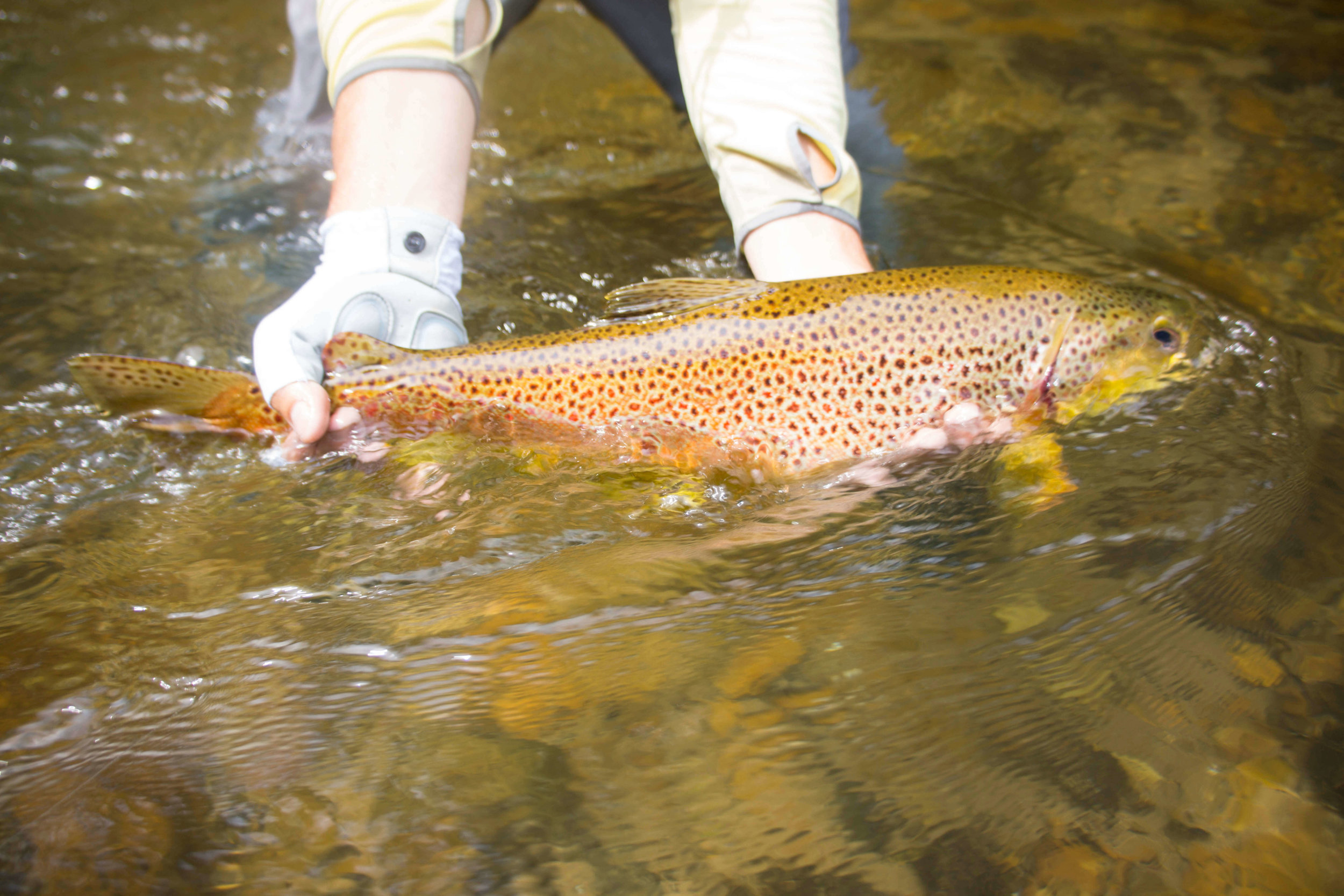
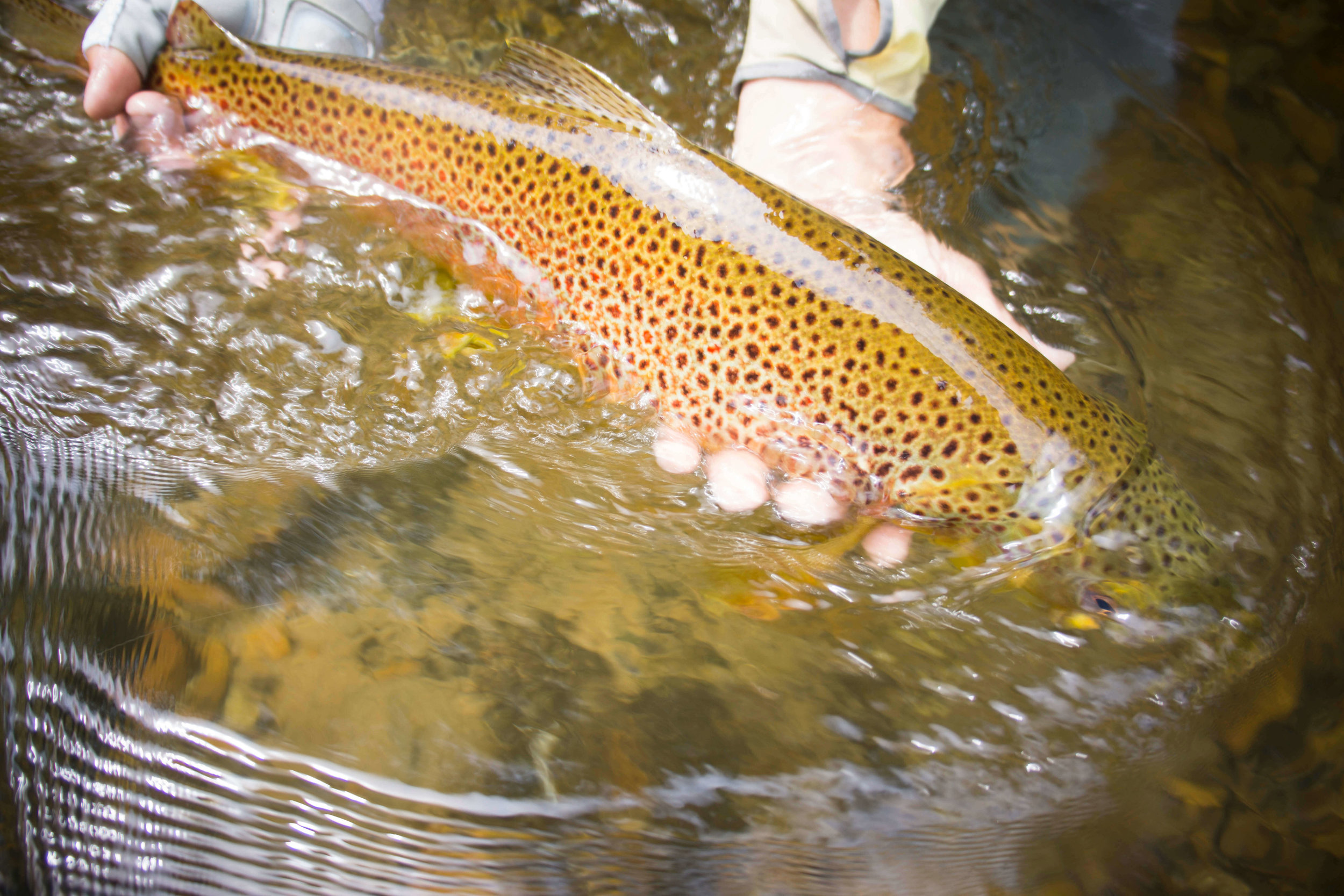
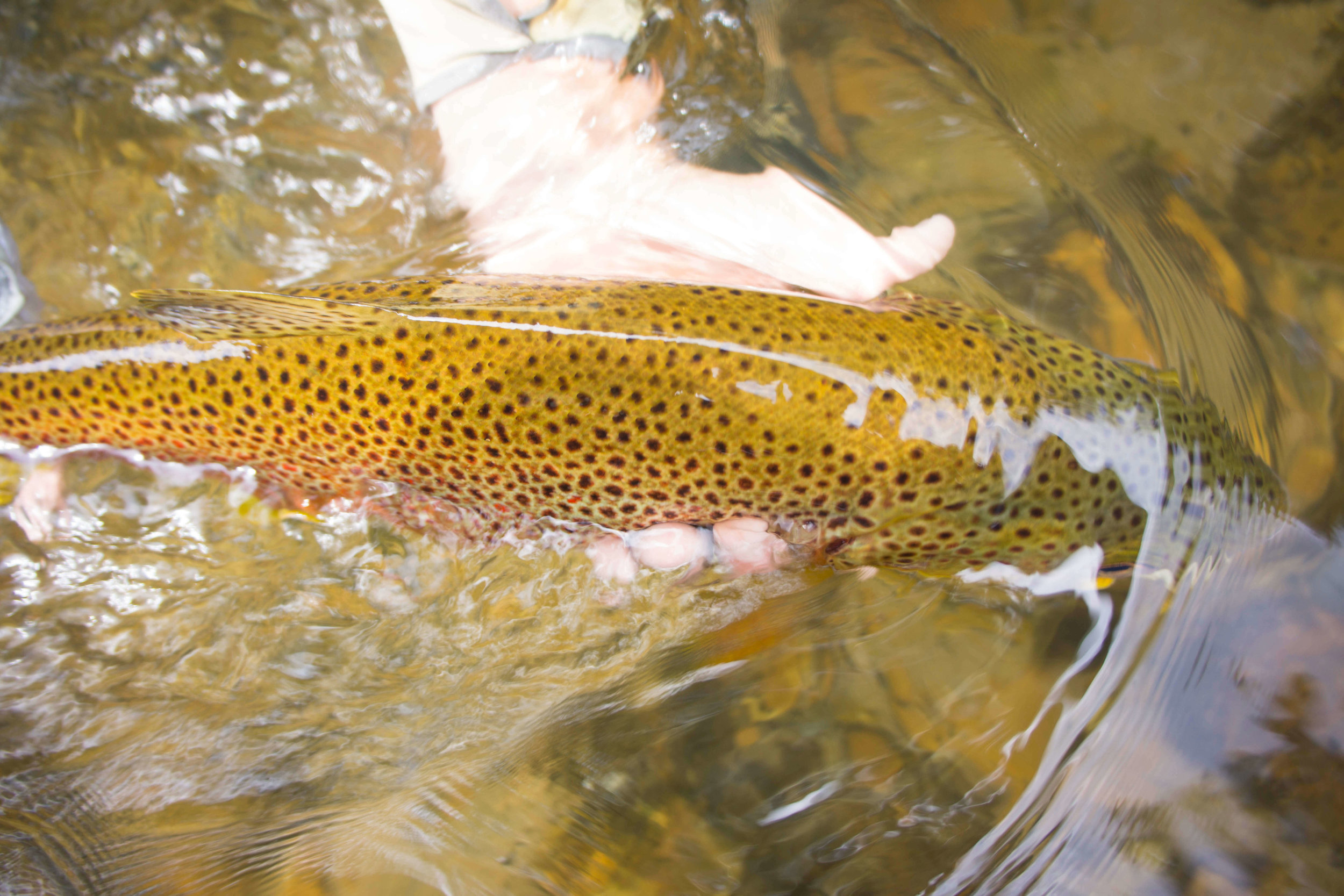
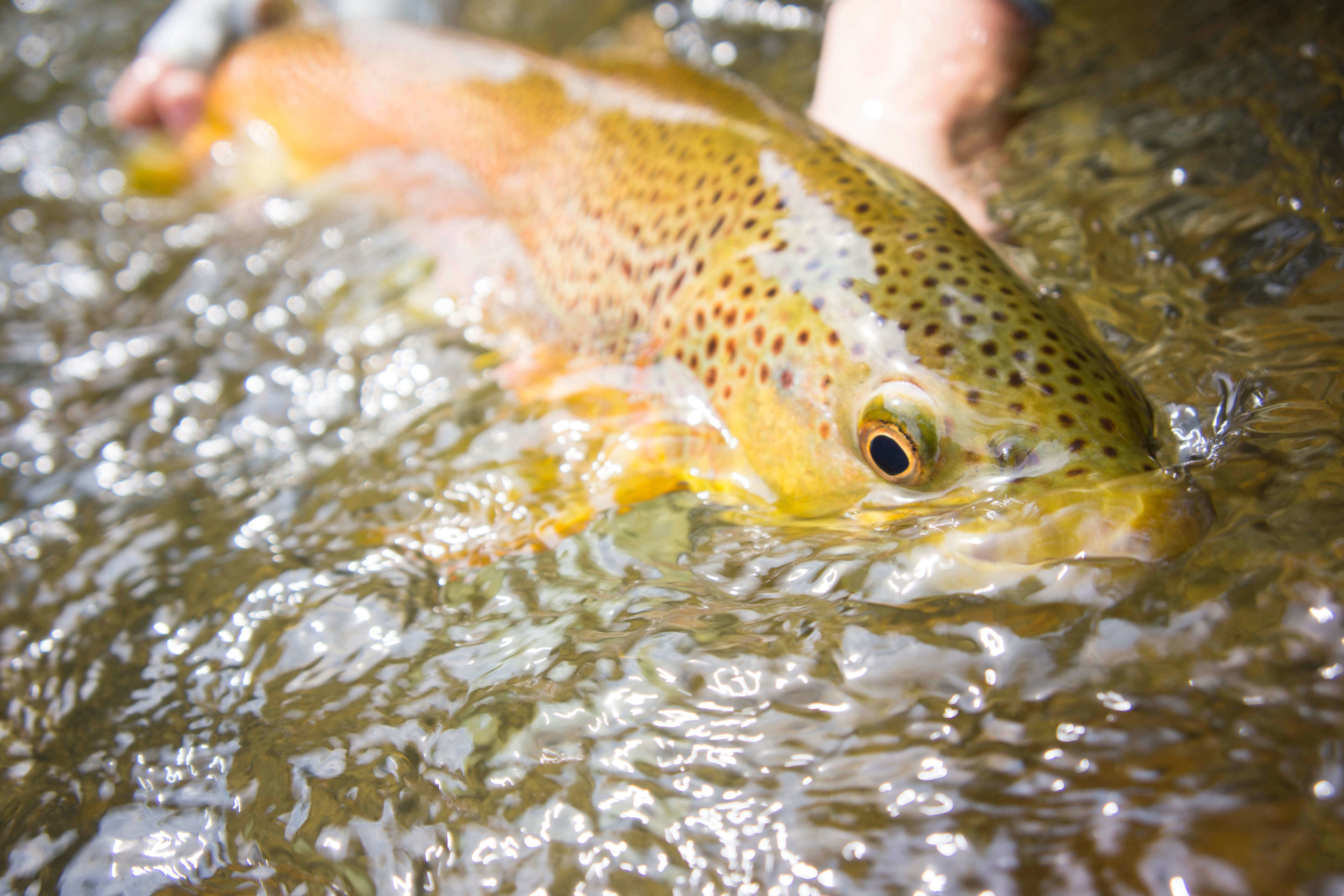


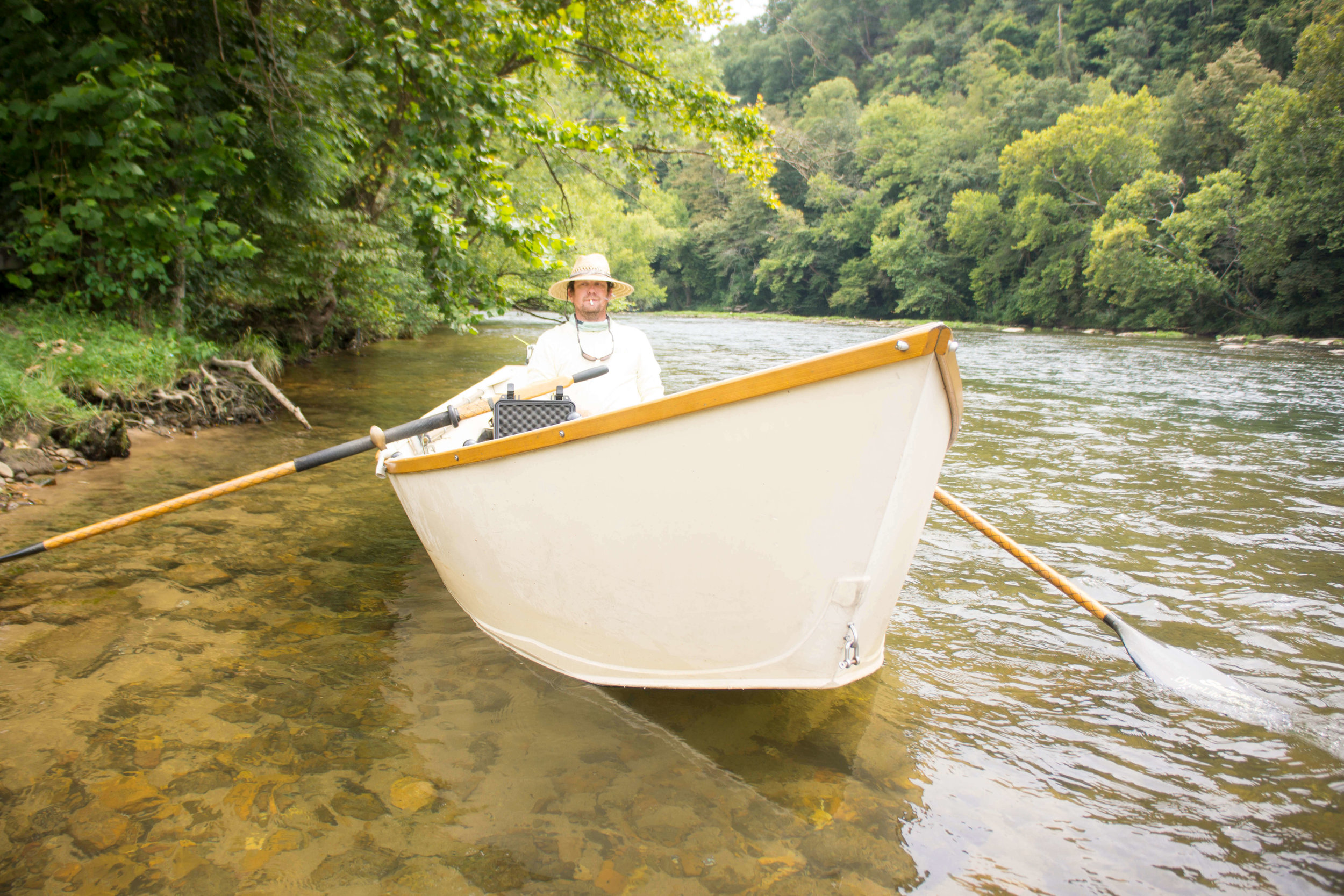
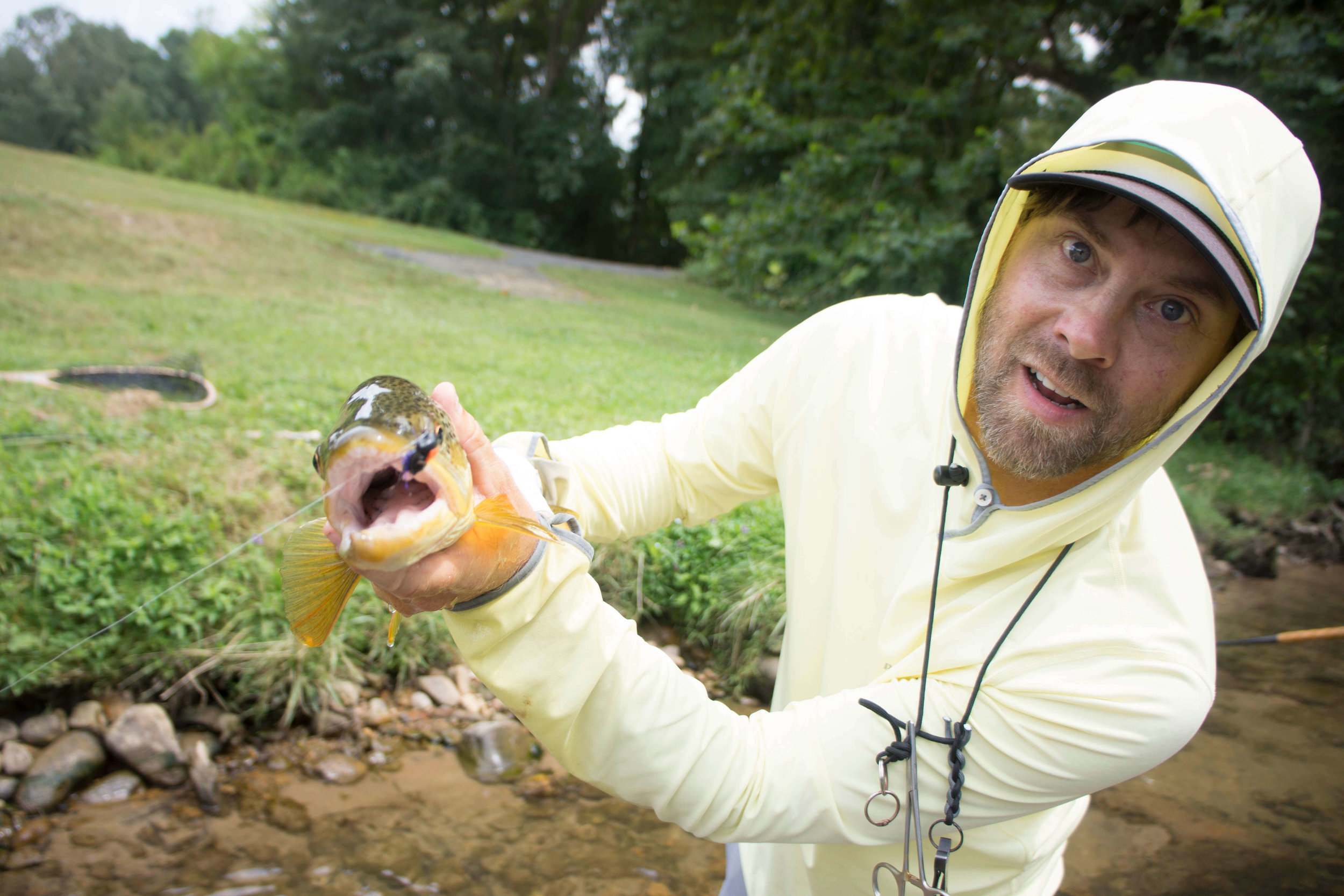

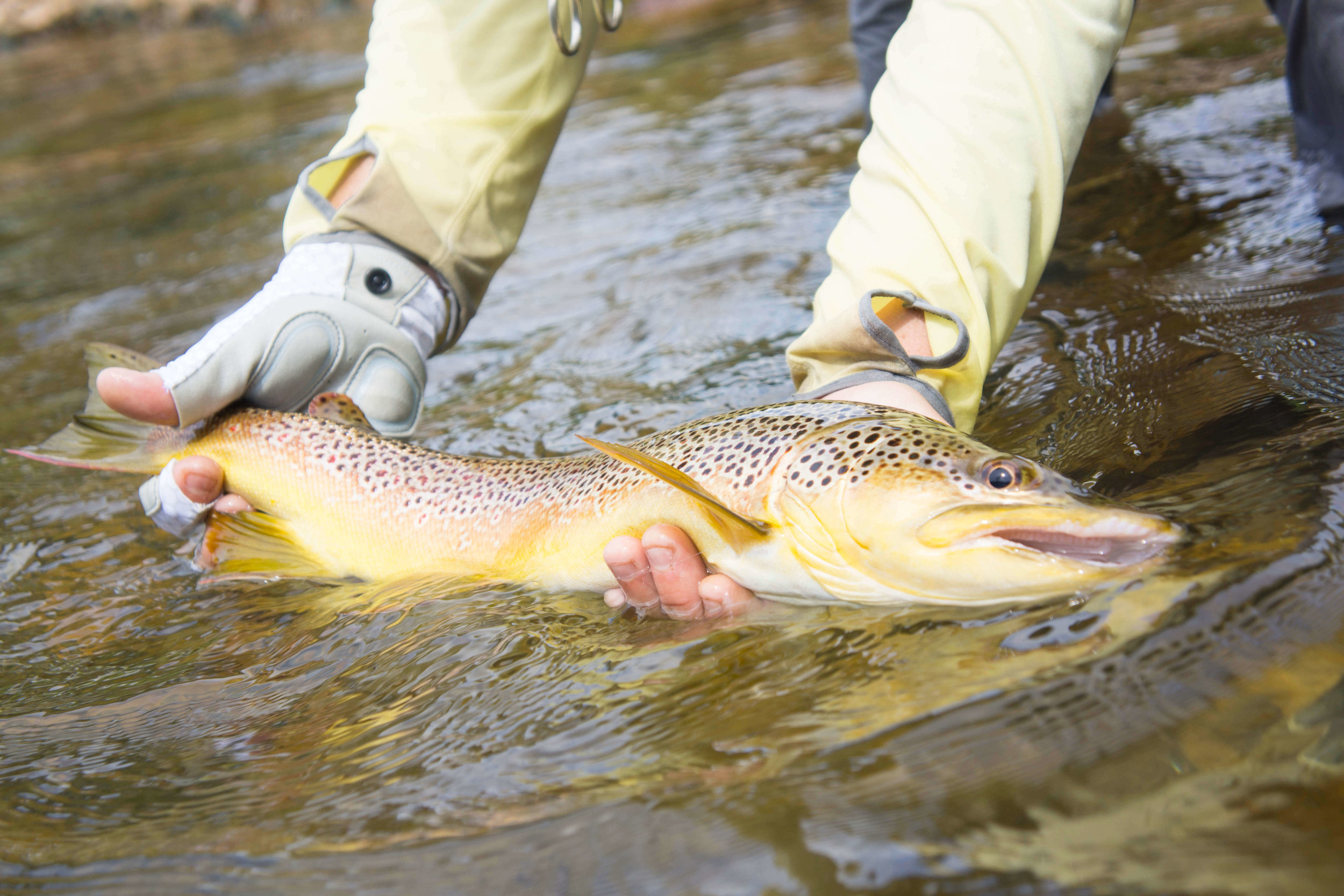

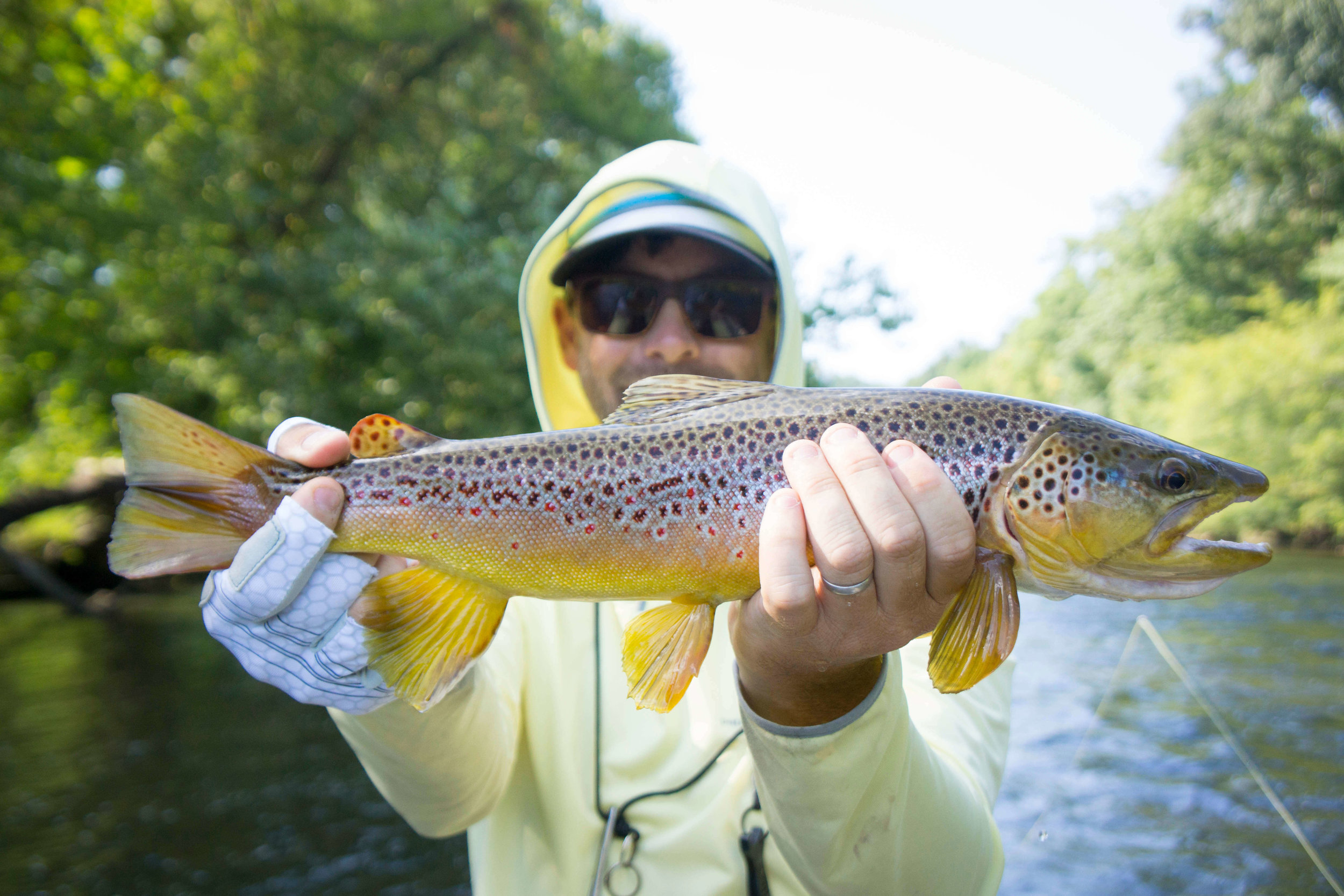
Sometimes we get our flies back from the fish that get away on guide trips.
On this particular guides’ day off I was fortunate to catch three fish that got away on trips I had the week prior. How do I know it was the same fish? Keep reading. It is debatable that once a wild trout finds a place in a river that suits all its needs, it will stay there until something disturbs or threatens it. Each client did a great job fighting these fish and we did everything we could as a team. The beetle popped out of two and the line broke on the biggest one. These particular brown trout are not easy to catch. Getting them to eat without spooking first is one thing, getting them in the net is another.
Most of the time, when a guide goes back for redemption it either pours down rain and floods or the conditions are such that the fish don’t eat.
I was lucky neither was true on this day and that each fish was in their temporary home for that long, even after being disturbed.
Each fish chose a nice spot. Relatively speaking, the biggest fish had an 8,000 square foot ranch style house with two wings on 25 acres. One wing was a nice riffle out front and the other was a deep hole underneath a log, the “man cave”. It had all the amenities: HVAC, fireplace, solar panels, two car garage, wrap around deck with grill & hot tub, a garden and nice mountain view. Again, it is debatable that once a wild trout finds a place in a river that suits all its needs, it will stay there until something disturbs or threatens it. Each time I went back these fish were in slightly different places at the house but they still came to the door.
I needed redemption. I was on a clean-up crew mission. I needed to confirm that I was coaching my clients correctly on how to fight these fish. They are trophy wild brown trout that live in the Watauga River & South Holston River tailwaters in east Tennessee near Johnson City, TN. It has been my experience that these particular tailwater trout can be some of the most choosy trout. Partly because tailwaters are typically very rich in aquatic life, partly for various other reasons. A tailwater is a section of river that is fed by a dam where the water is released from the bottom of a dam on a deep lake. The water temperature at the bottom of the lake doesn’t vary as much as the water temperature on the surface. This means the water temperature flowing into the river below the dam is more consistent and provides ideal conditions for tailwater trout year round. This is the reason trout can survive in places like Texas and lowlands of the southeast. Tennessee’s TWRA and TVA are doing a great job working together and we happily see biologists and rangers monitoring the river on a regular basis. The TVA produces a minimum flow which is always on even if the dam is not producing power. The minimum flow is a lower level of water released from the dam that keeps the water temperature regulated as seasons change. We are lucky to have two world class trout fisheries in the heart of the southeast.
Anyway, I needed redemption and these big fish don’t always come out to play. So, when trophy wild brown trout are aggressively eating beetles on the surface day after day for a limited time only, you go as often as you can. As we approached the first fish we stopped so I could point out the spots to the guys, read the water and make a plan. With a fresh 15’ leader and my favorite Winston (BIIIx 9’6” - 5wt.) rod we approached the first fish. As soon as I was in range I made a reach cast well upstream and across in order to cover the front edge and have time for another couple drifts before we got too close. The boat slowed, my line started dragging, a quick mend made the beetle skate briefly and like a beaver tail slapping the water “SMACK” the fish went for it and missed it, another quick stack mend to keep the beetle in its range as the current pulls the line and it was just enough. The big brown trout wasn’t going to let a helpless little beetle escape such a prestigious & agile creature as himself. I let the fish close it’s mouth and turn and lifted the rod like a catapult. As soon as I did that, the water erupted 60’ at our ten o’clock in a couple feet of water. The fish porpoised several times and we chased the fish for several minutes around the jagged limestone rock infested waters. The net went down, the net came up. Nothing. Another run for the money to the backing. Another swing into the current, arms shaking high above my head, rod butt section pointing to the sky, rod tip section doubled over pointing to the water, one more swing of the net and the crowd went nuts. We got him. And the next fish, and the next fish, and it felt good. Really good. I thanked my friends for their help and rowed the rest of the day. I’ll keep the other two fish stories for the river but, each came a little easier and in their own wonderful way.
Asheville Fly Fishing Company offers Single Day & Multi-day trips on both rivers year round.
That was a magic hour and a half on the bow. Gratitude.
Galen Kipar owns and operates Asheville Fly Fishing Company, a unique Southern Appalachian guide service offering a wide array of experiences, including immersive multi-day safari-style trips for Smallmouth Bass, Musky and Trout. For the last 15 years, he’s shared his passion and specialized knowledge of warm water smallmouth bass and trout species on the French Broad River, South Holston and Watauga Rivers with clients. He’s also partnered with regional conservation organizations to raise awareness of habitat protection and water quality. Fly fishing has led him all over the US, Bahamas, and Belize in piscatorial pursuits. Galen is a Field Advisor for Winston and Boulder Boatworks and a Bauer Reels Ambassador. On and off the water, he works with True Wealth Mentorship bringing together the life lessons of leadership and fly fishing for his guide staff and guests.
www.AshevilleFlyFishingCo.com / 828-779-9008
Don’t forget to save some time for fun this Fall!
The fun is being had and the brown trout saga will continue.
Here are some of the beetle eating fish that didn’t get away on trips.
